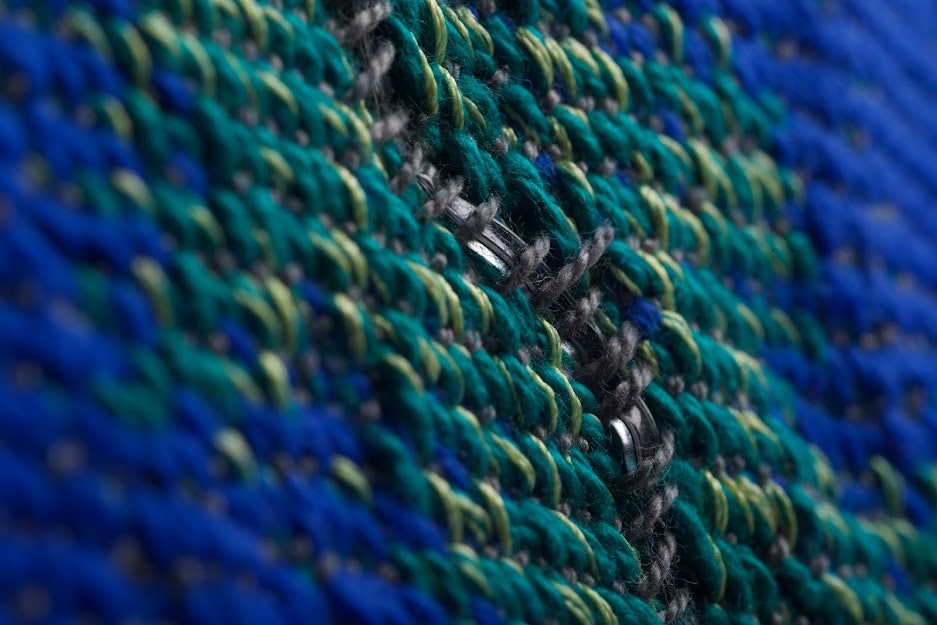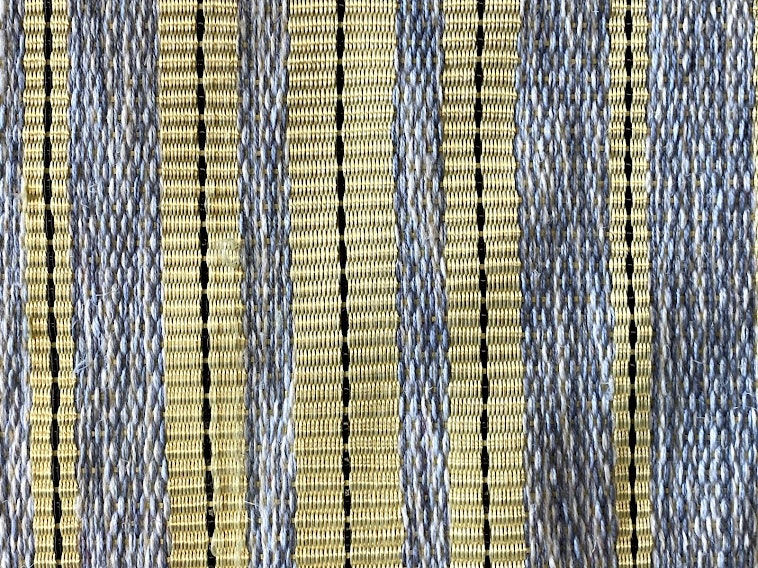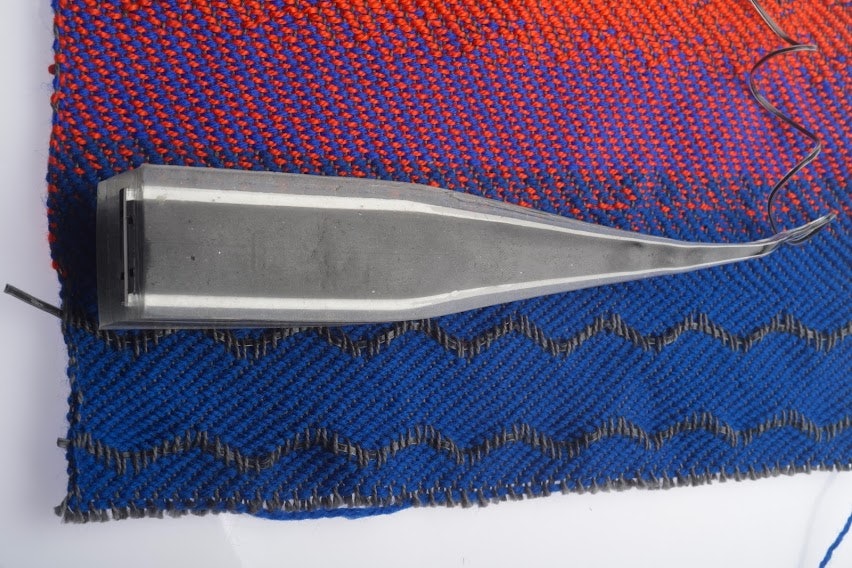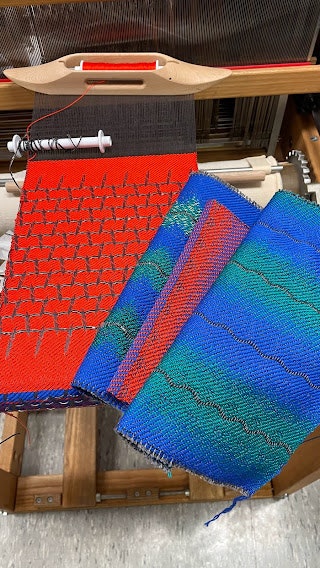
“I’ve fallen and I can’t get up” is a now popular meme that originated from a commercial for the portable ambulance caller LifeAlert. Since it came to market, more wearable technology has emerged to keep people safe in emergencies. Someday, these discrete tools could be embedded right into the fabric of our clothes.
An engineering team from MIT collaborated with students from Rhode Island School of Design to create a textile that can hear and (eventually) interpret what’s happening on and inside our bodies. Their work, published this month in the journal Nature, details how the fabric functions in the initial stages of its development.
What’s new — The new fabric technology can hear — or at least, it can detect — sound (in the form of mechanical waves) and translate it into electrical waves. This capability comes from a special 10-centimeter fiber woven into the fabric.
Clothes “have been used as acoustic absorbers for millennia, damping sound into heat,” lead author Wei Yan told Inverse. So he asked: “Can a fabric operate as a sensitive audible microphone like the human ear that converts sound [pressure] into electrical signal?”
Yan completed this work as a postdoctoral fellow at MIT and is now a professor at Nanyang Technological University in Singapore.
He wanted fibers that comprise a fabric to operate like the fibers in a human ear. The ear contains delicate fibers in the eardrum and cochlea, which, when bombarded with pressure waves from sound, convert those waves into mechanical vibrations. These sound waves are minuscule, on the order of nanometers.
Yan’s supervising author, Yoel Fink, a materials science professor at MIT, needed some persuasion before coming around to this novel technology. “It wasn’t easy for me to accept that fabrics ring like bells,” Fink tells Inverse.
This fiber gives the fabric a computational ability, as it can recover information. The fiber consists of piezoelectric material and a conductor fitted on rubber. Piezoelectric materials can produce electricity from mechanical stress, or motion. In this case, the motion comes from sound waves, which bend the flexible fiber, like fibers in the eardrum and cochlea do.
“The fabric is deaf,” says Fink. “The fiber could store, process, detect, and broadcast information” Combining the two empowers it to create hearing fabric.

Why it matters — This fabric can aid in tracking bodily health in new ways. Dr. Mario Garcia, chief of cardiology at Montefiore Medical Center, sees the new technology’s potential. Garcia details that current technology to follow heart health include electrocardiogram (ECG) and echocardiogram. ECG detects and visualizes electrical signals alone from the heart; an echocardiogram uses ultrasound, which transmits a sound through the body and creates an image based on the resounding waves. The fabric has the power to interpret sounds as electrical waves, sort of the best of both.
“Instead of monitoring the electrical signal here, we're monitoring the sound,” Garcia tells Inverse.
“We could potentially have a shirt that somebody could wear and we could say either the heart is getting out of rhythm or beating too fast. Or we could detect if the lungs are filling with fluid, and therefore the patient has to alter their regimen [or] medications.” Garcia was not involved in this study.
This fiber may seem similar to a smartwatch in that it can pick up on bodily signals and interpret them as health messages. These watches look directly at electrical activity in the body, while the fiber monitors the sound waves. In this way, the fabric acts almost like a stethoscope.
An advantage of this technology, Garcia says, is that it works around the clock. A doctor listening to your heart with a stethoscope only has information from that single moment. Garcia even imagines additional technology that allows the fabric to transmit information to the doctor directly via a monitor. Recording all these sounds and interpreting them as electrical signals could even aid in disease diagnosis.

Digging into the details — Garcia can see how this technology can transcend utility for those with heart conditions to an everyday wearable to monitor health. “[It] could potentially be used under any circumstances. This device could be recording or listening to the lungs and the heart of an athlete while they're biking, running, even while they're swimming. So the applications are not only disease but also health,” Garcia tells Inverse.
Fink and Yan see applications that have nothing to do with physical health. “It can be integrated with spacecraft skin to listen to (accumulating) space dust, or embedded into buildings to detect cracks or strains,” Yan told Inverse. “It can even be woven into a smart net to monitor fish in the ocean. It can also facilitate the communications between people who are hard of [hearing].”
Though Yan’s team hasn’t yet evaluated the cost of production, he says the price of materials is low. He estimates that one square meter of fabric could cost $50 or less. The cost of fabric varies depending on where its fibers come from, how it’s dyed, what the blend of the material may be, and more. One site estimates that a yard of good-quality fabric costs on average between $15 and $50. (There’s just over a square yard in a square meter.)
This fabric could be a new technological frontier. Fink says that technology and aesthetics seem “almost orthogonal to each other,” but that doesn’t have to be the case.
“Why do [smart]phones all look the same? Because there’s only one aesthetic,” Fink says. “There’s got to be a better, more creative way.” Imagine if smartphone design had as much variety as clothing design. Imagine if there were more options than just a black mirror-screened rectangle.

What’s next — Now that Yan and his team brought the fabric into existence, there’s a lot of refining to be done. He wants to tailor the piezoelectric component’s microstructure and even weave multiple hearing fibers into the fabric. He says this fiber can thread its way into other textile processes like embroidery and sewing, stitching ears with a needle and thread.
Separating the signal from the noise is another big part of this fabric’s future. For instance, the fiber can be refined to sieve bodily sounds, like a heartbeat, from surrounding noise using algorithms. “We can build and formulate algorithms that understand the context of that information. What is the difference between sounds occurring outside a heartbeat? It takes the data and turns it into information,” says Fink.
While this technology is still a ways off from commercial use, it already has researchers like Garcia eager for more. “I've seen many developments like this and over time become huge applications not only in the medical field but in our daily lives,” says Garcia. “Certainly, this is actually quite exciting.”







